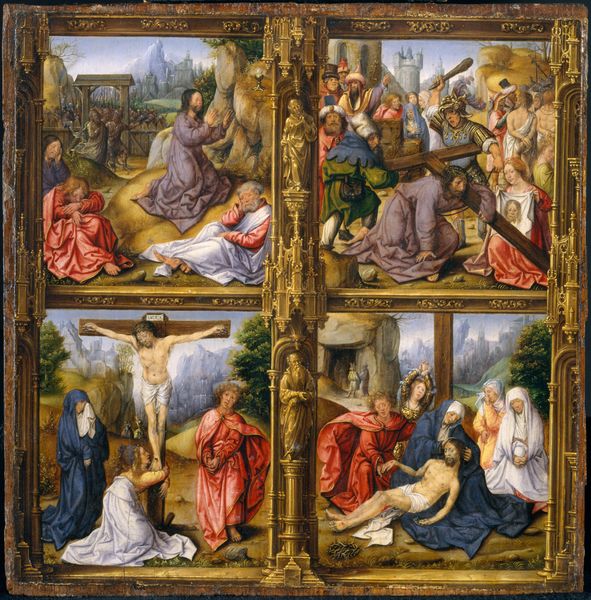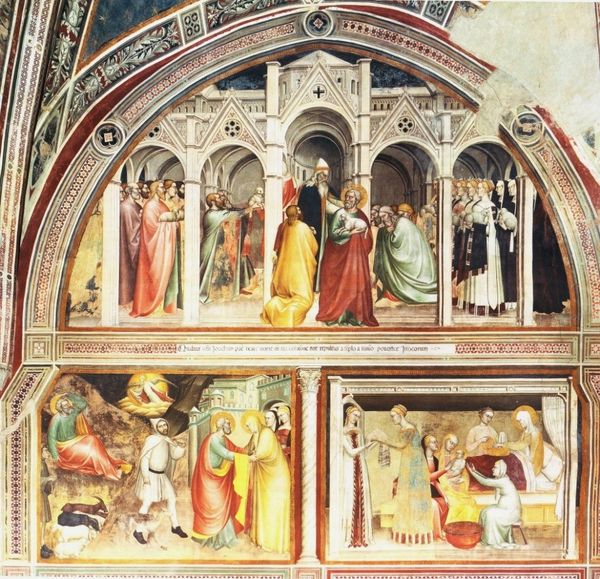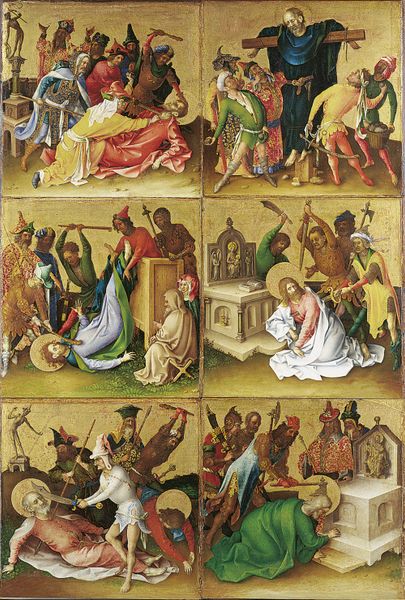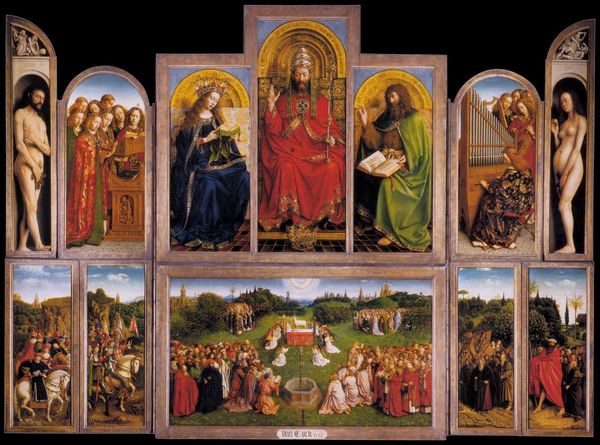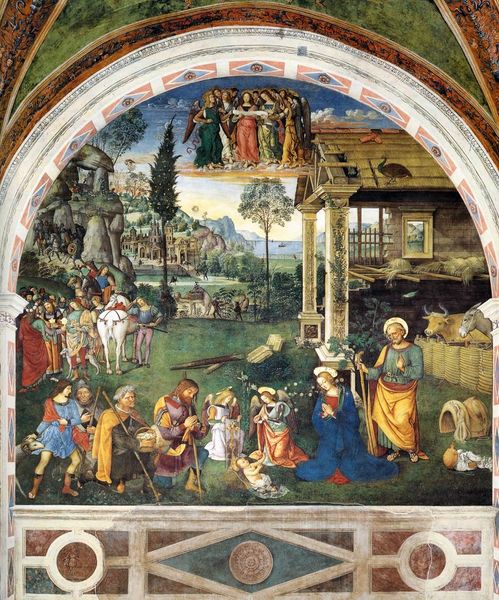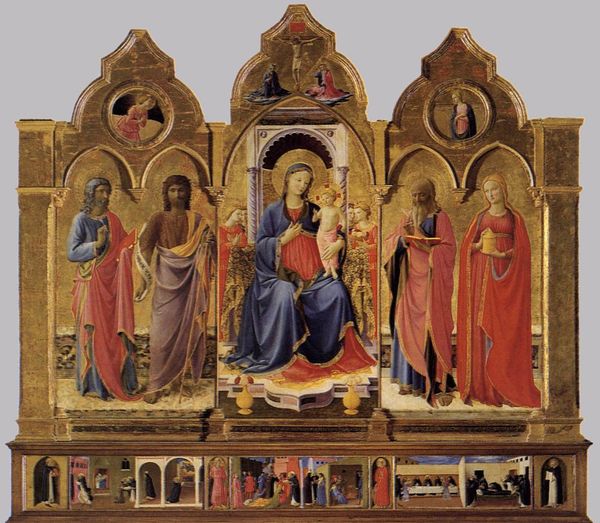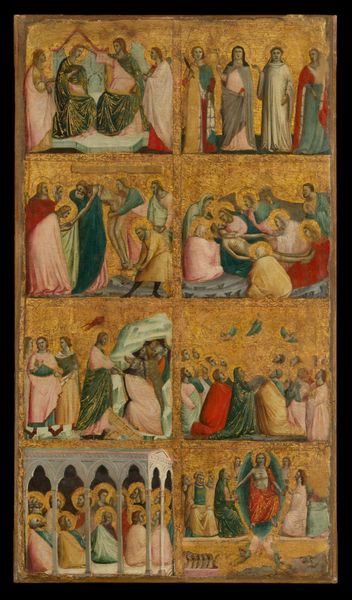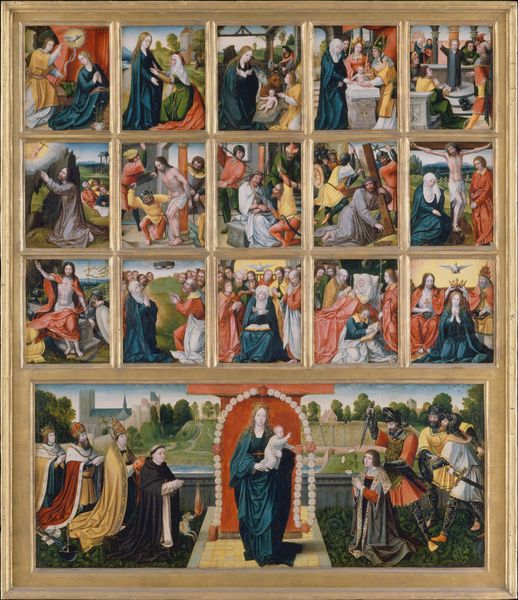
tempera, painting, fresco
#
narrative-art
#
tempera
#
painting
#
fresco
#
oil painting
#
arch
#
christianity
#
history-painting
#
italian-renaissance
#
early-renaissance
#
virgin-mary
#
miniature
#
christ
Dimensions: 123 x 123 cm
Copyright: Public domain
Curator: Before us is Fra Angelico’s "Scenes from the Life of Christ", completed around 1452. It's a tempera and fresco painting, currently residing in the Basilica di San Marco in Florence. Editor: Oh, it feels like a meticulously crafted storybook! So many compartments. The color palette is gorgeous, very soft, pastel-like almost, but with an intensity underneath. What a world to step into! Curator: The format is important. As a narrative piece, it really draws on the tradition of predella panels in altarpieces. The individual scenes aren't just snapshots; they're part of a larger material and devotional apparatus. Notice how the architecture connects one scene to the next. Editor: I do! It's like watching a play unfold with interconnected stage sets. And each little vignette holds so much emotional weight! I am struck by the Wheel of Fortune image; the faces are almost scary. Is that the intent, a warning? Curator: Consider the economic support required for such a project. The Medici family's patronage was essential, which suggests complex intersections of religious devotion, social status, and artistic production within the Florentine workshop system. Editor: Absolutely, you sense that power. But stepping back again, each miniature world makes you pause and wonder about the individual moments. And the figures feel incredibly graceful and human. Is it tempera that makes this possible or is that Angelico´s own signature technique? Curator: Tempera allows for that fine detail, yes, those delicate lines... but you see Fra Angelico using gold leaf very sparingly, focusing instead on the subtle gradations of color to create form. These are deliberate choices rooted in the craft traditions he inherited and then skillfully adapted. Editor: I guess that’s where the emotionality lives. Even in such small scale. It´s not ostentatious, it speaks in soft volumes that manage to capture the depth and breadth of Christ´s existence here. Curator: Exactly. Considering its context in the monastery, it was meant for quiet contemplation, a material meditation accessible every day. Editor: And that makes it more powerful. Sober. Even humbling in a sense. Curator: Indeed, seeing art through the lens of production and patronage offers a deeper appreciation of its intended use and societal impact. Editor: And getting lost in its story... that brings its intention into being.
Comments
No comments
Be the first to comment and join the conversation on the ultimate creative platform.

